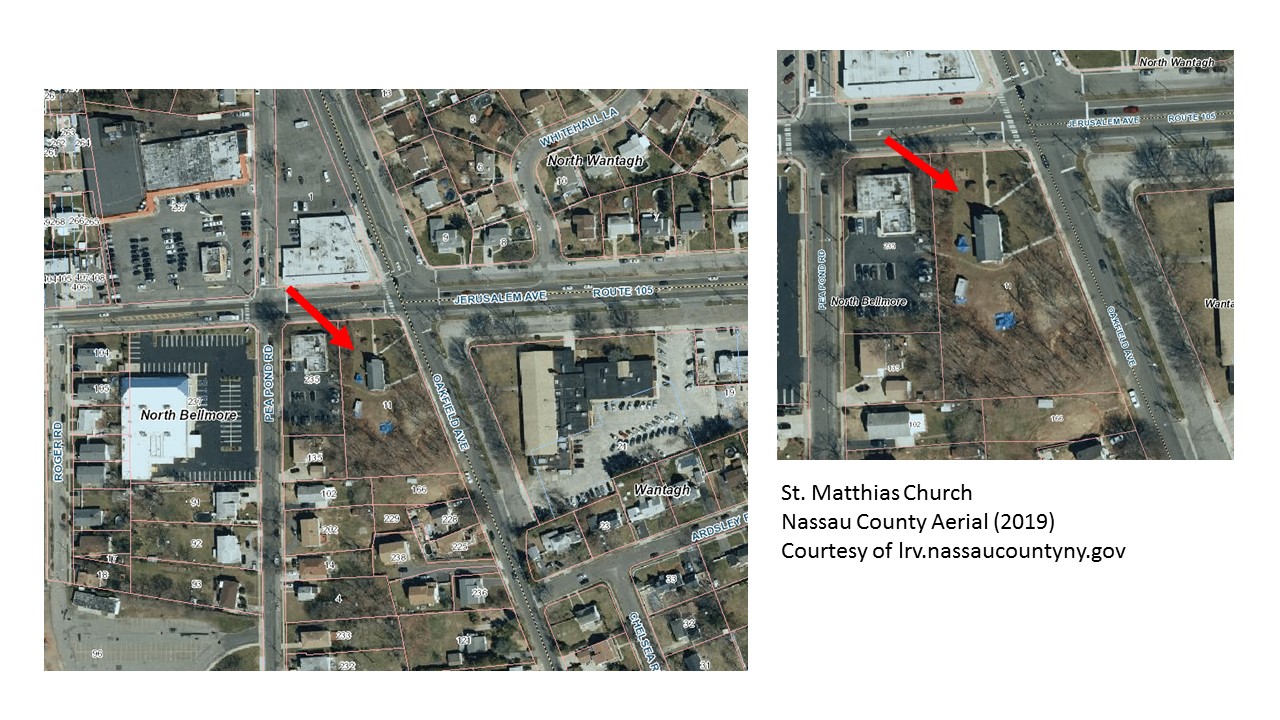UPDATE!
On May 19, 2019, the New York State Office of Historic Preservation determined St. Matthias Church is ELIGIBLE for listing on the National and State Registers of Historic Places.
ACTION ALERT!
If you live or work in the Town of Hempstead, please contact your Town Supervisor and Town Councilmember to ask for their vote in support of the designation of St. Matthias Church as a Hempstead Town landmark.
Preservation Long Island is pleased to welcome guest blog contributor Gary Hammond, retired curator and historian for Nassau County Museum Services, to discuss the remarkable St. Matthias Church. Edited Sarah Kautz, Preservation Director, Preservation Long Island.

On February 26, 2019, the Town of Hempstead Landmarks Preservation Commission voted unanimously to recommend St. Matthias Church on Jerusalem Avenue in Wantagh for designation as a town landmark; the nomination must now go before the Hempstead Town Council for approval.
The 114-year-old St. Matthias Church is worthy of landmark status as one of the few surviving buildings connected to early efforts by the Episcopal Diocese of Long Island to bring congregations of African Americans living in Queens and Nassau Counties into the Episcopal Church.
The building exhibits distinctive elements of turn-of-the-century Shingle-style architectural design and appears to be the second oldest surviving African American religious structure in Nassau County, following the 1833 Lakeville AME Zion Church located in Manhasset.


St. Matthias Church was built in 1904 to serve African American residents of “the Brush,” a historical community of color once centered around what is now Oakfield Avenue in the Town of Hempstead. Surrounded by mature trees and generous yards, the church represents one of the few remaining structures with direct ties to the Brush.
As early as 1835, a group of Quakers built a school for children in the area to help residents organize local civic life. Just ten years later, the Brush was home to an AME Zion Church with 47 members. After a fire destroyed the AME Zion Church around the turn of the 20th century, local white residents donated funds for the construction of St. Matthias Church at its current site on the corner of Jerusalem and Oakfield Avenues.
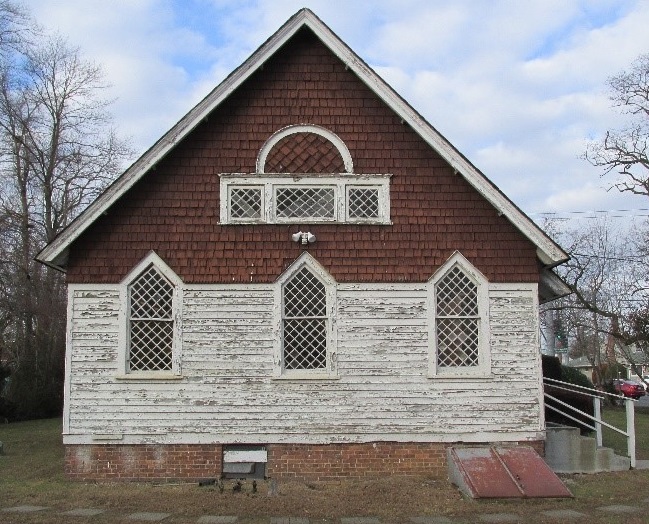
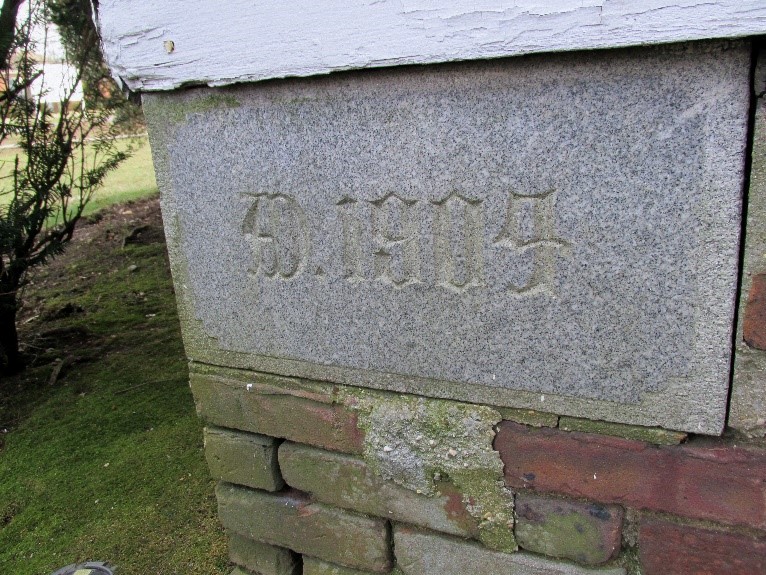
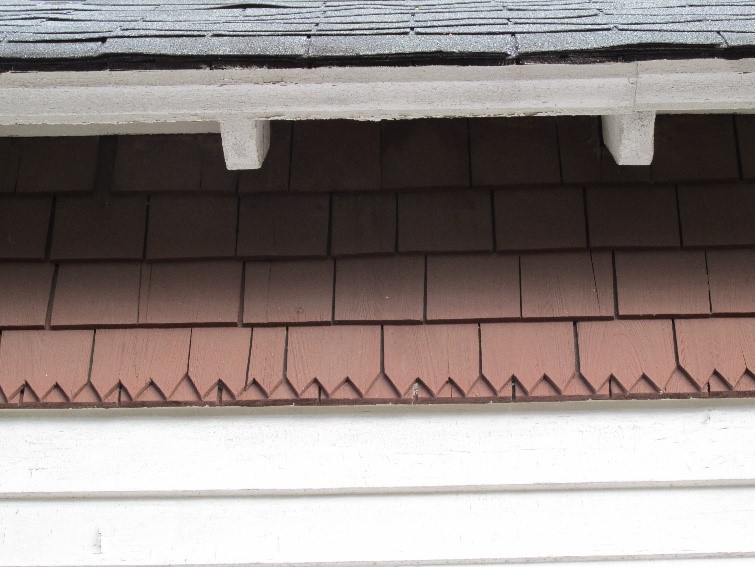
Without designation as a Hempstead Town landmark, the church is at risk of demolition or insensitive redevelopment by a new owner. Moreover, the church’s designation would complement two existing town landmarks associated with local African American history, both of which are located within walking distance of St. Matthias: the Harold Avenue Cemetery (founded ca. 1808) and the Lawrence House (ca. 1830), which was owned by three generations of a free African American family.
Also located nearby, at the site of the former AME Zion Church lost to a fire, is the Oakfield Cemetery/Old Burying Ground, where at least 108 residents are buried, including four Civil War veterans who served in the US Colored Troops as well as congregants of St. Matthias Church interred during the 20th century.
– by Gary Hammond
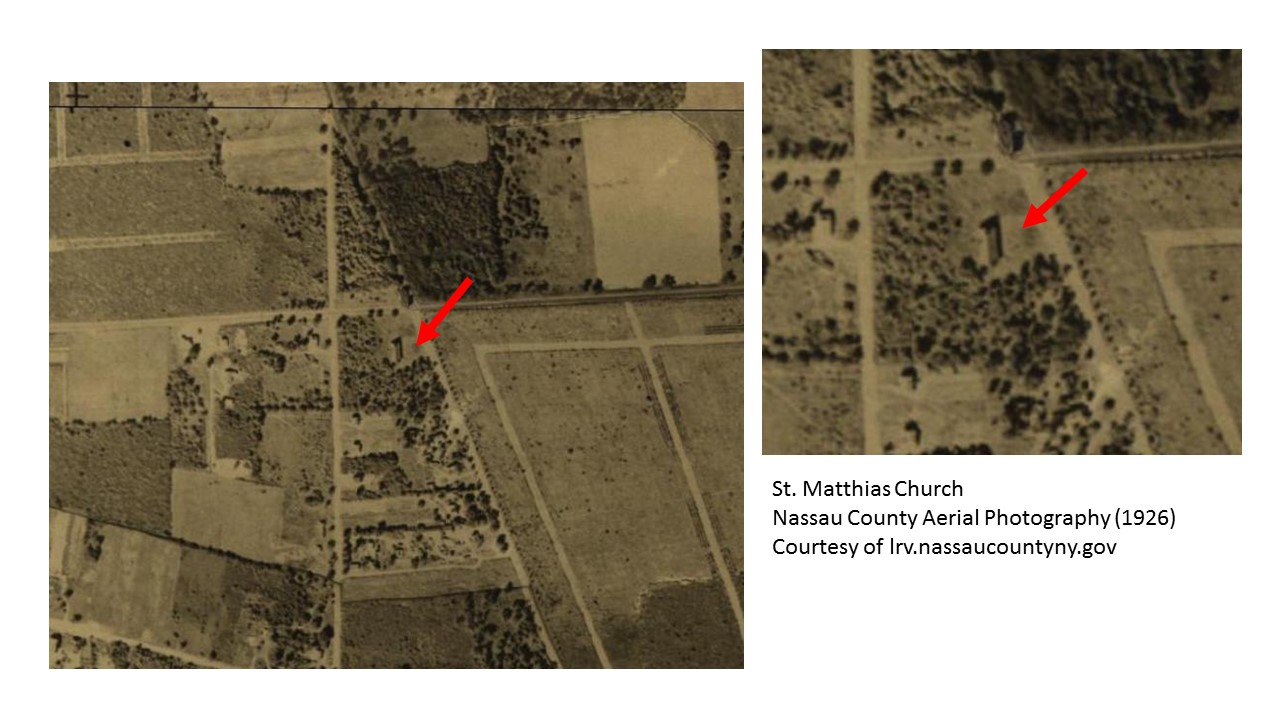
In closing, Preservation Long Island notes that structures associated with historical communities of color across Long Island, including St. Matthias Church, are at disproportionately high risk of demolition or insensitive redevelopment. The relative lack of landmark designations for properties associated with African American history is a key risk factor that some municipalities have sought to address.
For example, following a series of teardowns during the early 2000s at properties in the Bethel-Christian Avenue-Laurel Hill neighborhood of Setauket, the Town of Brookhaven designated the area as a local historic district in 2005. Like the Brush community of Hempstead, this Setauket neighborhood was initially settled by free people of color in the early 1800s.
Brookhaven Town’s landmark designation has helped prevent further loss of significant historic resources in the Bethel-Christian Avenue-Laurel Hill area and encouraged greater inclusiveness in local preservation for all Long Islanders. Designation of St. Matthias Church as a Hempstead Town landmark would likewise help preserve a significant historic resource associated with African American history and encourage a more equitable approach to development and preservation on Long Island.
